How To Kill Moss on Concrete, Bricks, & Pavers: 9 Easy Methods
-
Pete Ortiz
- Last updated:
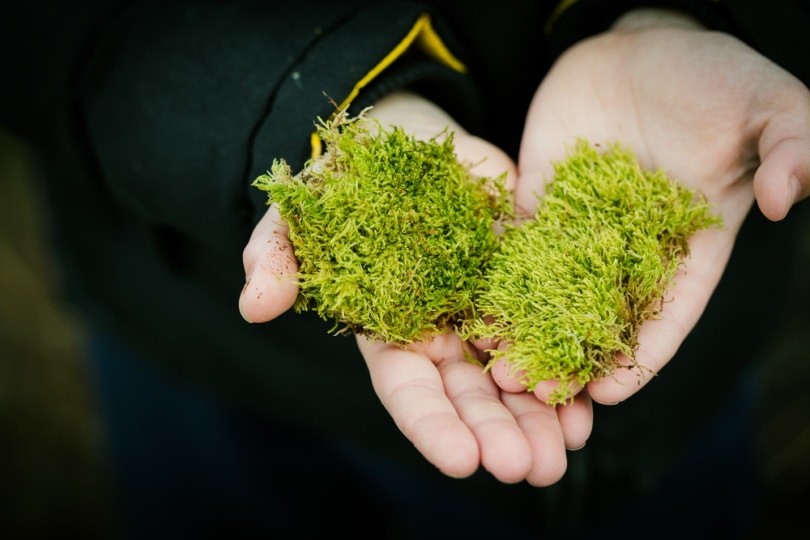
The ethereal and luminous appearance of moss may look charming, especially when it carpets the ground and adorns the rocks and logs that inhabit the garden, but when it takes over the driveway, it can be unsightly. Spores blow in from nearby moss and land in the cracks, and shady, damp, and humid conditions make it ideal for moss to thrive on any surface.
Moss is tougher than it looks and grows in several environments. While it can go dormant and lose its bright green hue, it does not die, so you will need to tackle this resilient plant on your own. In this article, we talk about nine easy methods that can help you remove moss from your bricks, pavers, or concrete, which tools are helpful, and how to prevent it from coming back.
The 9 Methods to Kill Moss on Concrete, Bricks, & Pavers
1. Boiling Water

Boiling water is one of the easiest ways to remove moss from your concrete, pavers, or bricks, and the most natural method if that is a priority. All you need to do is boil water in your kettle or pot and pour it over the mossy area. The moss will be dead within a few hours, and you can use a wire brush to obliterate it. Be sure not to pour the boiling water on surrounding plants but have peace of mind knowing that the runoff won’t cause any harm.
2. Vinegar
Vinegar is a harmless solution for eliminating moss. It can be used easily by mixing one part water with two parts vinegar into a spray bottle, spraying the area you want to clean, and allowing it to sit for 4 to 6 hours. Over 24 hours, the moss will die and turn brown, and you can scrub it away with a wire brush. This vinegar and water solution is eco-friendly and non-toxic, but if you expose other plants to it, they may die. If your surface is wooden or painted, the mixture may cause it to discolor.
3. Household Bleach
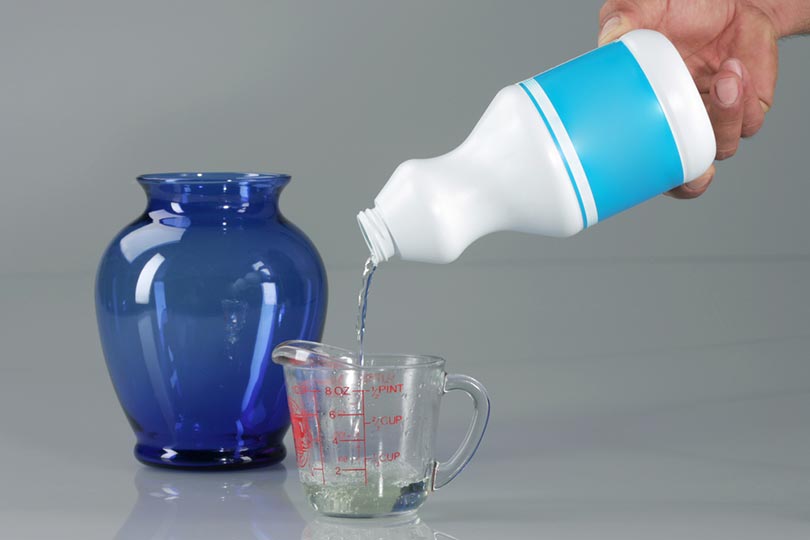
Household bleach can successfully remove moss, but it is best used if you have no surrounding plants or grass, as the runoff may affect it. Mix one part bleach with one part water in a spray bottle. Spray the area of moss you want to remove and allow it to soak for about 30 minutes. Once the moss is dead, you can rinse the space with a water hose. While the dilution of this mixture is typically safe to use around plants, you will need to use it carefully.
4. Baking Soda
Baking soda is a natural and safe solution to killing moss. It will increase the pH and neutralize the acid conditions, and the moss cannot thrive. Mix 3 tablespoons of baking soda with 1 quart of water into a jug or spray bottle. Apply it to the moss and allow it to sit for 24 hours. Some moss will fall away on its own, and the remaining moss can be brushed away with a wire brush.
5. Moss Killer Spray
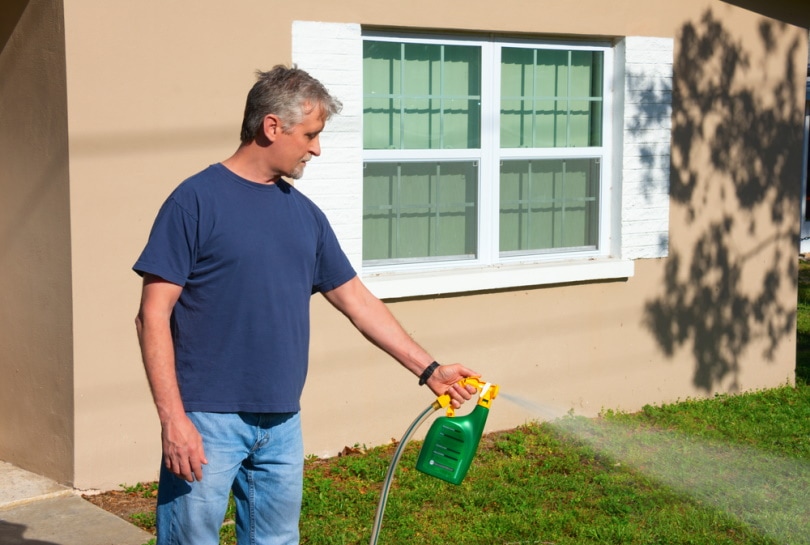
Commercial Moss killer spray is convenient since it comes premixed and ready. It can remove moss on concrete, bricks, and pavers without harming surrounding plants, staining concrete, or discoloring painted surfaces. The moss should turn brown, indicating it is dead, within 3 to 5 hours. You can use a wire brush and water after that to completely remove it.
6. Ammonium Sulfamate
Ammonium sulfamate is a toxic chemical and works to remove moss by burning it. It is typically used to control woody plants and added to compost as an accelerator and flame retardant. It is commonly applied to the moss in a sprayer, but it’s important to note that it can destroy other plants and grass nearby. Extra care should be taken when using this chemical solution.
7. Reduce Moisture
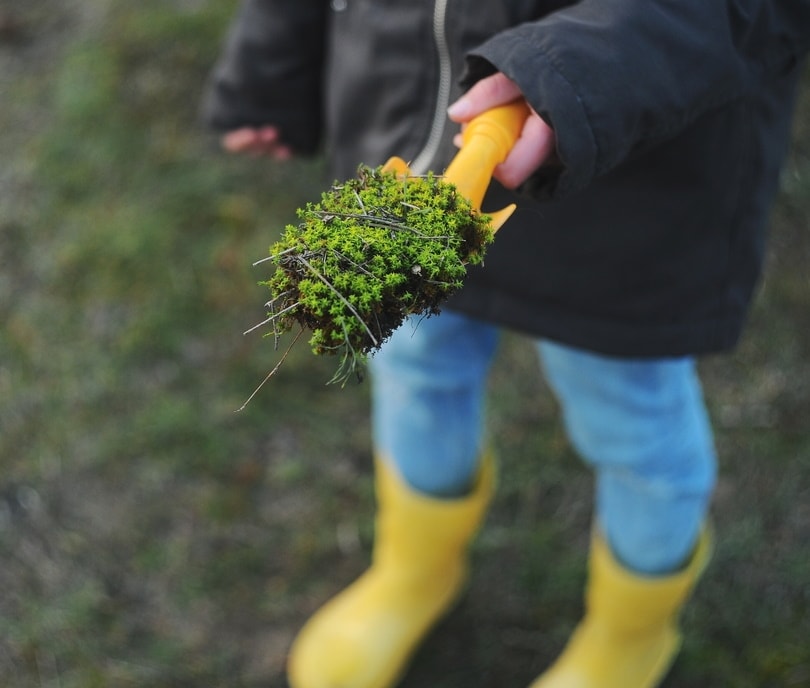
As we mentioned before, moss thrives in moist areas. If the moisture factor is removed, the moss will begin to dry up. Sometimes, this is impossible, for example, if you live in humid regions. Assess your pavers or bricks and what surrounds them to see if a leaking faucet is causing moisture to build up. Eliminate any source of water build-up on your concrete, bricks, or pavers.
8. Sunlight
Moss loves cool, shady areas and will not thrive where it is sunny. If the place where moss is a problem is shaded, it will help significantly to increase the amount of sunlight. Cut back trees, move or remove plants, and re-arrange any furniture casting shade onto your bricks or pavers. If direct sunlight hits the mossy areas, after a few days, it will die.
9. Power Washer
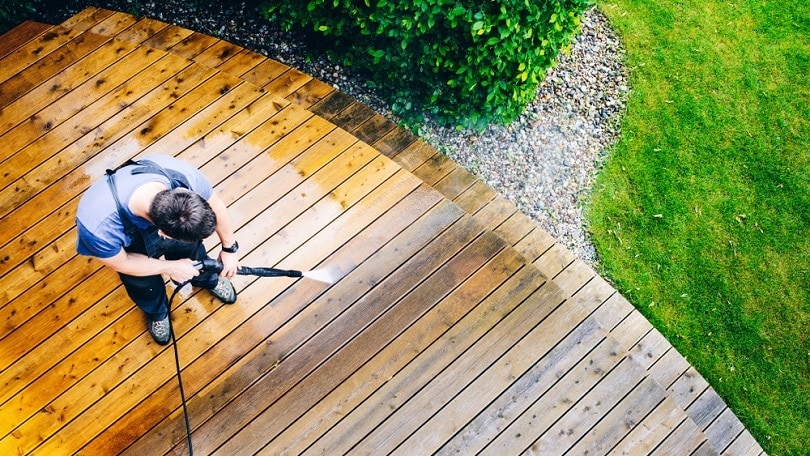
The pressure of a power washer is a great solution to remove moss. It is also great in that it doesn’t involve any chemicals. If a sprayer doesn’t remove all the moss, one of the other options could work as a secondary solution.
Concrete can handle intense pressure, and any nozzle attachment will work, but bricks will need a nozzle with lower pressure. It is also essential to be cautious when operating a pressure washer since it is powerful enough to go through a shoe! Calling a professional may be helpful if you’re hesitant to complete the job on your own.
Tools You May Need to Remove Moss
While it’s great to have the option of mixable solutions to remove moss, additional tools are needed to remove it altogether. Here are some tools you may need to help you along:
- Spray Bottle: A lot of the solutions that are mixed will require a spray bottle. It sprays the solution effectively and evenly over the areas where you want to remove moss.
- Wire Brush: Some moss can be stubborn and need extra elbow grease to get rid of. A wire brush is helpful to remove moss after it has died, and because of the flex in the wire, it can move into cracks and pavers easier.
- Broom: A broom is helpful for sweeping away any dead moss on a smooth surface like concrete and removing smaller debris left after using a wire brush.
- Garden Hose: A final rinse of your concrete, bricks, or pavers will help to see if you have successfully removed all the moss. Not only that, but it will also help rinse any leftover solutions.
- Protective wear: When opting to use solutions that are toxic, you should protect your clothing, hands, eyes, and lungs, depending on how strong the chemical is.
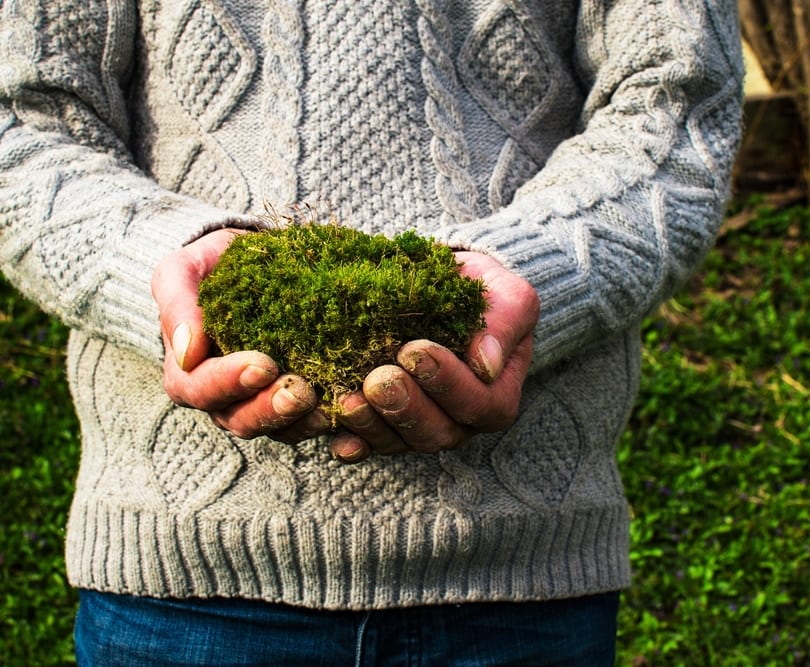
Tips to Prevent Moss
Prevention is always better than cure, right? Once you have removed the moss, you must ensure that it doesn’t grow back. The best solution is to make sure that conditions aren’t ideal for moss to thrive. Here are some tips for preventing moss from growing on your bricks, pavers, and concrete:
- Open up the area and allow more sunlight to hit.
- Try to limit the amount of water that runs onto your pavers or driveway.
- If you run sprinklers often, ensure they do not overflow or run onto your pavers or bricks.
- Regularly clean the area with one of the methods above as a preventative measure.
Conclusion
When moss becomes an unsightly and unruly occurrence on your bricks or pavers, there are a few easy methods to get rid of it. Whether you are eco-conscious or a believer in chemical solutions, there is a method for you to try. There is no right or wrong way, and what may work for one person may not work for others. Prevention is key in keeping moss under control, as well as understanding what makes it thrive. Creating unsuitable conditions for moss to grow will keep it at bay and will help you save time and money while prolonging the life of your pavers, bricks, or concrete.
Featured Image Credit: Tommy Lee Walker, Shutterstock
Contents




